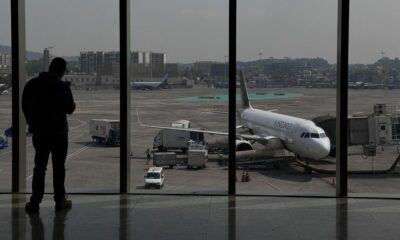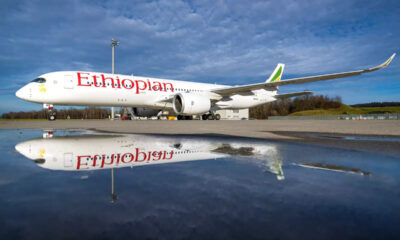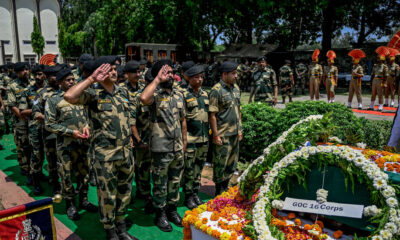Destination
India’s aviation sector has wings, but airlines can’t fly high, BA

If anything can be done for the aviation sector in Budget 2025, the government must learn lessons from 2024, which serves as a wake-up call. Really.
The sector is at a crossroads, grappling with poor infrastructure, security lapses, and heavy reliance on overseas services—factors that impact operational efficiency and ultimately hinder growth. A recent report by ICRA has projected that the country’s civil aviation industry will report a net loss of INR 2,000-3,000 crore in the current and next financial year. This is primarily due to ongoing supply chain challenges and engine issues, which are expected to persist for some time.
Despite receiving reduced funding in the first full budget of Modi 3.0, Budget 2025 holds the potential to improve the flight experience. It could address these persistent challenges through strategic investments, policy reforms, and incentives for domestic manufacturing under the “Make in India” initiative.
For a population as large as India’s 1.4 billion, the number of operational airports falls significantly short of demand. As the fifth-largest economy in the world, India has just 149 airports, meaning each airport serves an average of 94 lakh people.
It is no surprise that the UDAN scheme (Ude Desh Ka Aam Naagrik) has not taken off. Moreover, a steep cut in funds for the Regional Air Connectivity Scheme (UDAN) – from INR 850 crore to INR 502 crore, has raised concerns.
Many Tier 2 and Tier 3 cities still lack operational airports, and existing ones are often outdated, with inadequate runways, passenger amenities, and air traffic control systems. These deficiencies limit their capacity to handle growing passenger numbers, creating bottlenecks and affecting travel convenience.
Smaller airports and regional airlines face significant challenges, such as high operational costs, limited passenger traffic, and seasonal demand fluctuations, making profitable operations difficult. Furthermore, several regional airports are yet to be fully developed, delaying the enhancement of regional connectivity under the UDAN scheme.
To bridge these gaps, significant budgetary allocations are essential for modernising airport terminals, expanding runways, and upgrading security systems.
Kinjal Shah, Senior Vice President and Co-Group Head of Corporate Ratings at ICRA Limited, said, “The Budget is also likely to focus on setting up new airports and expanding the existing airport capacities at some key airports to help address the current airport infrastructure constraints faced by the airlines and to improve connectivity with the underserved/unserved destinations to boost tourism.”
Enhanced intermodal connectivity between airports and public transport systems is also necessary to facilitate seamless travel experiences.
Vineet Agarwal, Managing Director of Transport Corporation of India, noted the importance of modernisation in the Indian aviation sector. “Budgetary allocations for enhancing intermodal connectivity for airports, sea-plane ports, and special helipads will help improve passenger transit,” he said.
Additionally, integrating advanced technologies like automated air traffic management systems and expanding Digi-Yatra to more airports will improve operational efficiency and enhance passenger convenience.
The Make in India initiative has mostly focused on electronics and garments, with little attention given to civil aviation, an area the government aims to bring on par with the railways. While manufacturing aviation parts or even assembling them in India is nearly absent, maintenance services are equally lacking.
It would be unfair to say no steps have been taken. Last year, the government took steps to strengthen this sector by rationalising the GST and allowing 100 per cent foreign direct investment (FDI). However, these measures alone are insufficient.
A renewed Production Linked Incentive (PLI) scheme for aviation components, coupled with public-private partnerships (PPPs), could act as a catalyst for achieving self-reliance in the aviation sector.
The absence of robust domestic maintenance, repair, and overhaul (MRO) services contributes to operational inefficiencies and a significant rise in costs, further impacting profitability. According to Vineet Agarwal, India currently represents just 1 per cent of the global MRO market, with 90 per cent of MRO requirements being met abroad.
“Key areas for Make-in-India would be aircraft components, ground support equipment, avionics, defence aircrafts and sustainable aviation fuel production…This is a burgeoning area and in the long run, it will help in reducing operational costs for the sector and aid in creation of premium jobs,” he said.
The importance of localised manufacturing and services cannot be overstated, especially given India’s rising aviation needs. With over 1,000 aircraft orders placed, the country is poised to become the third-largest buyer of commercial planes globally. This alone could create demand for 200–300 maintenance checks annually, which would significantly reduce costs if handled domestically.
“In line with the government’s increasing thrust on Atmanirbhar Bharat or Make in India, the Budget could focus on incentivising the maintenance repair overhaul (MRO) sector and push towards building the requisite infrastructure to promote the aircraft leasing business domestically,” Kinjal Shah said.
Like the defense MRO sector in India, especially that of Tata and Lockheed Martin, investing in indigenous manufacturing and MRO capabilities for civil aviation could save billions of dollars and generate thousands of jobs. A 2021 Deloitte report indicated that a strong indigenous MRO sector could save India $2 billion in foreign exchange and create 90,000 jobs.
Beyond cost-cutting, this would also reduce India’s dependency on global supply chains, which can be disrupted by geopolitical tensions or economic uncertainties.
One of the most pressing demands of the aviation sector in Budget 2025 would be the inclusion of Aviation Turbine Fuel (ATF) under the GST framework. “The Indian aviation industry expects rationalisation in the duty structure of aviation turbine fuel (ATF) as well as inclusion of the same under GST,” said ICRA’s Shah.
Currently, ATF is taxed at varying VAT rates by states, ranging from 1 per cent to as high as 30 per cent. This fragmented taxation structure significantly increases operating costs for airlines, ultimately burdening passengers with higher airfares. Rationalizing the tax structure through GST could bring much-needed cost efficiency and price stability to the sector.
ATF costs contribute to nearly 40-50 per cent of an airline’s operating expenses, making it a key determinant of ticket pricing.
For infrastructure, GST, and putting India on the MRO map, all eyes remain on Finance Minister Nirmala Sitharaman and her upcoming Budget.
-

 Destination8 months ago
Destination8 months agoSingapore Airlines CEO set to join board of Air India, BA News, BA
-

 Breaking News10 months ago
Breaking News10 months agoCroatia to reintroduce compulsory military draft as regional tensions soar
-

 Tech News12 months ago
Tech News12 months agoBangladeshi police agents accused of selling citizens’ personal information on Telegram
-

 Gadgets3 months ago
Gadgets3 months agoSupernatural Season 16 Revival News, Cast, Plot and Release Date
-

 Productivity11 months ago
Productivity11 months agoHow Your Contact Center Can Become A Customer Engagement Center
-

 Gadgets3 weeks ago
Gadgets3 weeks agoFallout Season 2 Potential Release Date, Cast, Plot and News
-

 Breaking News10 months ago
Breaking News10 months agoBangladesh crisis: Refaat Ahmed sworn in as Bangladesh’s new chief justice
-

 Toys12 months ago
Toys12 months ago15 of the Best Trike & Tricycles Mums Recommend























